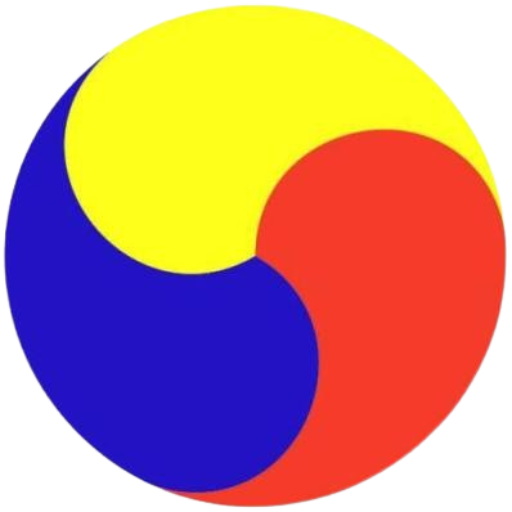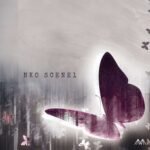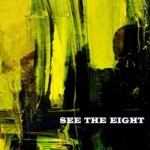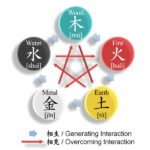Because I enjoy artistic analysis way too much. This is less about the MV’s story and its acts per se and more about the allusions and imagery called upon for the story.
The song and video tell stories of women leaving toxic relationships and rewriting their narratives to be different than the expected narrative. And they all do this with their own scenes–each artist also has their own motif, which their final outfits emphasize.
Opening: 1774 (according to the roman numerals but not according to the fashion lol)
We open with a scene of a clock that is ticking backwards, and the sound of chiming church bells. The clock going backwards foreshadows what’s to come in the video, where each artist refuses to follow the expected narrative for them.
Lisa appears dressed like a witch, but instead of being surrounded by eerie scenery, she’s surrounded by pillars reminiscent of Greek temples. She’s a goddess here, calling the others to her. The classical imagery continues throughout the scene, from small decor of a woman playing a stringed instrument to a giant statue of an unclothed goddess.
Lisa: Creation, Temptation, and Shame (Year 1, 26.7505N, 51.6834E)
Lisa’s scene isn’t just year 1 but coordinates for the Persian Gulf, aka the Garden of Eden.
Lisa’s scene has her fiddling with apples under a tree–presumably the Tree of the Knowledge of Good and Evil from the biblical Garden of Eden story, where Eve is tempted by a serpent to eat a forbidden fruit. There are many apples lying around, and Lisa picks one up and touches them, but never eats them, symbolizing that she doesn’t need the temptation of a toxic relationship anymore. At the same time, it paradoxically indicates that she doesn’t need to bite the apple to learn, because she’s already learned the good and evil from the relationship.
There’s another layer, too. Lisa’s pose–lying on the bench–and her distinctive bodysuit with its scale-like pattern also suggest that she’s become the snake. She’s the one offering temptation now.
When the camera pans out, we see that the tree is upside down, with the roots stretching towards the sky, symbolizing more knowledge. It could also be a reference to Yggdrasil, the tree that holds up the worlds with its branches and roots. It ties into the Garden story because Yggdrasil is a major part of Norse creation myths. Syncretizing multiple creation stories together may indicate a widening perspective–truly knowledge of the world.
Lisa’s final dress continues this motif. It’s essentially a torn rag thrown over her–a very Eden-esque reference to the story, where after Eve and Adam eat the fruit they realize that they’re not wearing clothes and hide out of shame. But Lisa also wears something underneath it: a bikini top that is made of armor. The “vulnerability” and “shame” that Eve experiences is not shame to her; it’s her armor.
Raye: Baptism and New Life (1939)
Raye’s scene takes place in water. Water is, well, the classical symbol of rebirth in art. Not only because of physical birth involving “water” (amniotic fluid), but because of the verses from the Gospel of John where Jesus talks about being born again:
Jesus replied, “Very truly I tell you, no one can see the kingdom of God unless they are born again.”
“How can someone be born when they are old?” Nicodemus asked. “Surely they cannot enter a second time into their mother’s womb to be born!”
Jesus answered, “Very truly I tell you, no one can enter the kingdom of God unless they are born of water and the Spirit.”
Raye’s water scene also includes hundreds of flowers. The imagery of a woman sinking into water with flowers brings to mind Ophelia, Hamlet’s lover who is driven mad by the strain of her lover going “mad” himself and killing her father, who is himself really controlling and tells Ophelia to break up with Hamlet to protect her virtue before he even starts acting crazy. The scene of Ophelia’s demise has many artistic renderings, some of which Raye’s scene seems to reference.
However, there’s a twisting of the narrative, just like there was with Lisa as Eve and the serpent. Instead of dying, Raye’s being baptized by the hardship of the now-ended relationship–and being given new life.
In the final scene, Raye wears a dress with a rose blooming out of it.
Doja Cat: Madonna and Wh*re Complex (1691)
It’s a thing in literature I promise.
Doja’s scene begins with her dressed in a religious outfit reminiscent both of nuns, Puritans, and artistic portrayals of Mary Magdalene (a woman whom in the Bible was demon-possessed before Jesus cast the devils out and is historically seen as a “fallen” woman despite that not really being in the text). She dances before a colosseum (like, the ground is sand) of empty chairs, symbolizing a performance that nobody is watching. At the same time, she still performs because she’s expected to. The ground being sand also hints that their relationship was built on sand and it would never last.
Then we switch to the exact opposite of the religious, pious Madonna image and into the more pop-star-Madonna imagery. Doja’s tied to a metal pole, which seems to reference pole dancing especially with her leather outfit, but the fact that she’s bound to it brings to mind the idea that she’s being burned at the stake, which in the cultural zeitgeist is associated with societies attributing misogynistic blame to women and punishing them. The flashes of fire make it clear this is deliberate. 1691 was also the year before the Salem Witch Trials, which didn’t burn witches but did execute innocent women.
The burning at the stake image is also a sharp contrast with Doja’s final form in the end: Joan of Arc’s armor. Joan was, of course, burned at the stake for “heresy” which was really, in her trial, evidenced solely by her not conforming to what a woman should be like in the time. Instead of her burning being the ending of the story, Doja becomes the warrior after being baptized by fire, so to speak.
Gymnastics and Figure Skating
So what’s up with the weird gymnastics scene? Well, the equipment shown actually includes specifically the gendered events. Women don’t compete rings or pommel horses, and men don’t compete balance beam (they have different events on bars, but they both do use bars). There’s obvious “finding balance” symbolism, but also the idea is that she isn’t conforming to the narrative about what a woman should do or be.
So then why are there figure skates at the start of the scene? It’s a little hazy to me, but I’m actually a lifelong fan and follower of both of these artistic, Olympic-centric sports, which are often lumped together. But it also reminded me of a well-known book in both of these sports’ worlds called Little Girls in Pretty Boxes: The Making and Breaking of Elite Gymnasts and Figure Skaters, which explored the dark sides of each sport and how they mistreat girls to force them to fit a particular image. The net behind Lisa also indicated this scene could represent breaking free from a net or trap.
Ending
We have Raye blooming like a rose, Doja as Joan of Arc, and Lisa as an armored and wise Eve marching towards a rock (in contrast to sand), past covered cars. We also see a shot of pearls–symbolic of the hardship they’ve overcome to become new women. Also, symbolic of the sexuality underlying each narrative–wherein it’s not a sin or something to be ignored, but something beautiful and valuable.
submitted by /u/lilysjasmine92
[link] [comments]















